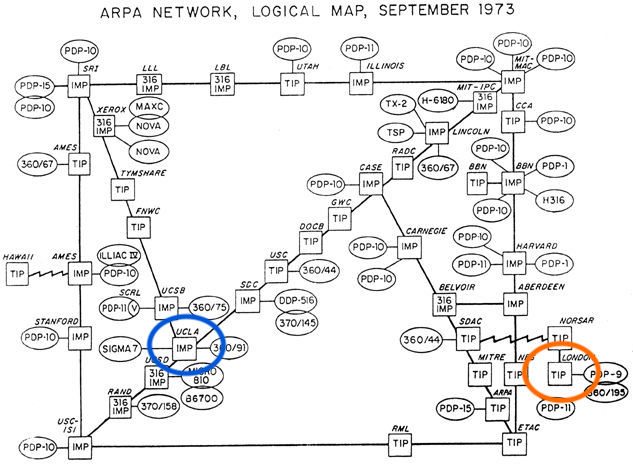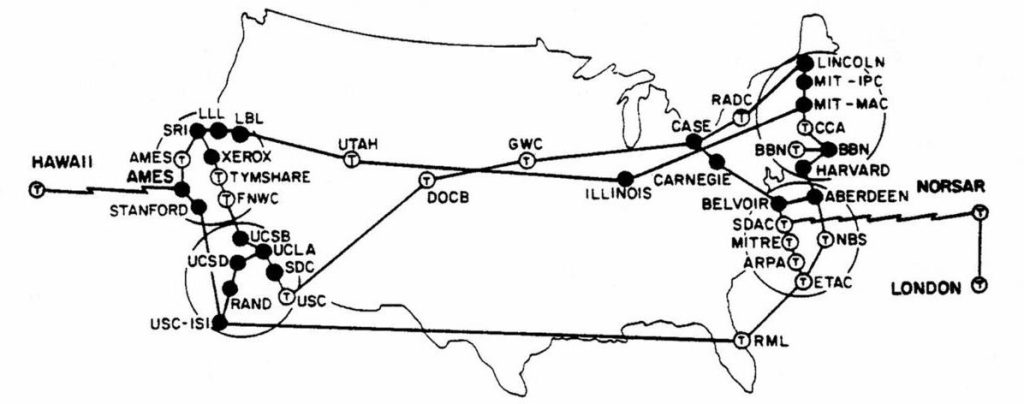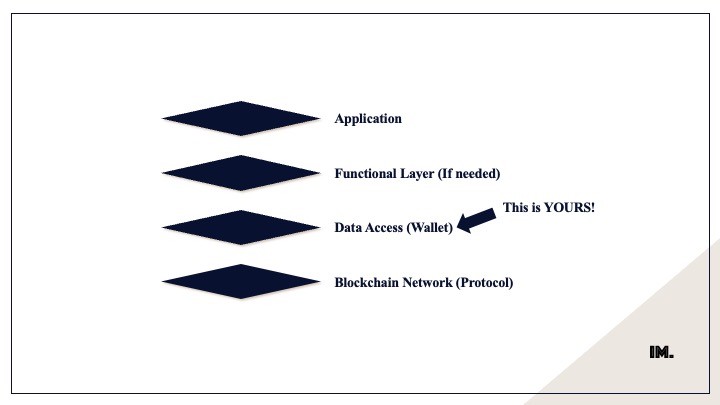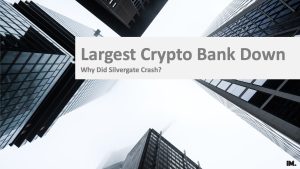Time To Talk Web3
Lots to share after a great private event on blockchain technology covering web3 infrastructure and the new business models made possible by the new technology. Like I said many times in my blog and newsletter items, these are very exciting times, comparable to the start of the software-based economy and internet technology.
The infrastructure for the big transformation of the coming years is being built as we speak.
But what is this infrastructure all about? What problem is it solving? And how is it going to matter for the average guy?
A Quick Journey Through Web History
To understand what web3 actually is, we need to take a few steps back. Web3 implies that there was a version 1 and 2. Web 1.0 came out in 1969 as a smart way for researchers to share knowledge and data to collaborate on large, worldwide projects. For decades it remained a nerdy technology just a few people on the planet could understand and work with. In Web1, each computer had to build a connection to the computer they wanted to talk to. This is what the internet looked like in 1973.

So if you where at UCLA in California, USA (circled in blue) and you wanted to share data with London, UK (circled in orange), you had to establish yourself a connection going most likely through the server in Belvoir, Virginia, then through a satellite connection to Norway (Norsar) and finally to London.
On a map, it looked like this. Most of this network was in the US, with the exception of two nodes in Norway and London.

Despite this working well, it was unimaginable that an average person be able to navigate this complex network of connection to get anything done.
Web 2.0 is the version we are seeing right now. Web2 scaled this network worldwide, making it easier for the user to enter and interact with it. It officially started with the introduction of the Internet Protocol (IP) and the Transmission Control Protocol (TCP): the common language for all the computers connected to the network. With this common language, it was possible to build interfaces to allow a wider access to this network and some basic interactions.
After all, basic rule in logistics, if you have a route to transport product A. You can also do it with product B, C, and D. That madness of a map being web1 was the basic route to share research data. But if you share research date, why not… personal messages, product information, orders, money, etc.
What Is Web3?
But if all of this is already available, what is Web 3.0 adding? What is there more to add here?
Well, during the transition from web1 to web2, the internet became highly centralized. In an effort to make it easier for people to use, many companies started creating interfaces solving the boring technical stuff for us while offering useful services. Emails. Social networks. Cloud computing. Webshops. Money transfer. And so on and so forth.
These companies own the entire infrastructure. All the way from the website we use to access the services to the data we share (or actually give) to them.
Because of this, one aspect is missing in web2. We actually gave it away in exchange for the services we use daily on the internet. Ownership of digital assets.
At the core, web3 reshaped how we connect worldwide while allowing true ownership of digital assets.
What are digital assets? All pieces of information related to what you share, do, and create on the internet. You personal details, your art, music, books, notes, blogs, videos, bank transactions, money, logos, emojis, messages, emails, photos, drawings, and anything else you might possibly do on the internet.
With Web2 being highly centralized, we lost ownership of any digital assets.
A singer does not own their music. Spotify does.
You do not own your digital identity. Meta does (owning Facebook, Instagram, WhatsApp).
You do not own your digital files. Dropbox does. Or Google.
How Does Web3 Work
I will share a little anecdote to answer this question. Whether you are a crypto OG or not, you must have heard of the name Ethereum at one point in the past 3-5 years. No? Well, one of the largest blockchain network in the world (second only to Bitcoin) is Ethereum. The name Ethereum is inspired by “ether”, once believed to be the substrate or medium through which light would travel. That hypothesis turned out not to be true. But just like that, the Ethereum network is a substrate protocol, a super computer in the cloud, through which information will travel.
The major difference between web2 and web3 is that the web3 protocol (the substrate) is run by a large distributed network of people and not by one institution or corporation. Web3 is per definition decentralized. And it has to be this way otherwise we cannot guarantee true ownership of digital assets.
Web3 gets this name for one simple reason. Because web3 is decentralized, the networks have to be built based on a protocol, a set of rules describing how the networks works, how information is exchanged, processed, stored, etc.
In other works, web3 separates the layer where information travels, is processed and stores, to the layers where consumer-facing applications are built. This means that companies will continue to build applications for us to send emails, store our photo collections safely, shop online, stream a football game, but… the information exchanged in these transactions is processed outside these companies in a decentralized network. The companies will obviously have access to the data, in order to provide their services, but that piece of information stays in your possession.
So What?
And this is how an artist can remain owner of their music, while making it available to a streaming service for people to listen to it. This is how a writer remains owner of their own books, while readers can access the books through a modern app on their phone or computer.
There is many web3 infrastructures being built as we speak. Bitcoin, Ethereum, Solana, Litecoin, Ripple, Polygon, and many more. These are not per se competitors with one another. This is not a winner-take-all type game. The world is abundant enough for anyone to grow their own reality. But think of these networks as cities.
New York for example is a powerful ecosystem, for many the city of hope, of opportunities, the city where you can start your life anew. LA, diametrically opposed pole, is just as thriving, and powerful, elite, known for the most expensive real estate in the world. But there’s many more. São Paolo is a buzzing ecosystem, home to the largest financial system in Latin America. Shanghai, the city where every proud Chinese dreams to come back to and contribute to the immense growth China is experiencing.
And just like these cities, all the web3 networks (typically called Layer 1) are creating their own unique ecosystem. Some focused on money transfer (Bitcoin, Litecoin), others on contractual transactions (Ethereum, Solana), and many others in the attempt to enable new useful interaction between people, companies, and governments.

The New Protocol Economy Powered By Web3
As I mentioned before, and I will keep mention it over and over again, web3 infrastructure allows true ownership of digital assets. And this will be the core business model of what is called protocol economy.
A protocol is a basic set of rules that allows for data to be shared across the various computers in the network. A protocol is interoperable, immortal, and extremely scalable. In other works, with protocols we can create highly profitable businesses, at marginal costs, with the potential to scale massively in a short time.
Ethereum launched in 2016 and within only 6 years they reached a stunning annual revenue of $7 billion in network fees. The Ethereum Name Service (read my article here) went from 0 to $60 million in revenues in the first year after launch in 2017. Uniswap (decentralized exchange protocol) within only 4 years after their launch in 2018 reached $1.1 billion in exchange fees.
Protocol businesses are also very interesting because they scale even further in value by leveraging their ecosystem. This is similar to Apple with their Apple Store. But ecosystems in web3 are inherent to the business.
If Web3 This Easy, Why Is Google Not Implementing It?
I believe big tech firms will most likely acquire their way into the web3 space (this is how the web3 industry is called in web3 slang haha). Tech giants like Google, Meta, Oracle, Amazon will not be the ones implementing the new protocols because that is structurally different from and at odds with their core business model.
For example, Google could technically turn their entire infrastructure upside down and decentralize it. By doing so they will lose ownership of the data, and that’s at the moment how they make their money. But, they could still do it and turn Google Mail in a paid subscription service. I would not mind paying for a great email service that guarantees 100% ownership of my personal emails!
Dropbox – same story. Since Dropbox is already a paid subscription-based service, they could technically decentralise their entire infrastructure and offer a service where the user remain the sole owners of their files. A similar service is now being build on the blockchain called Storj.
Final Thoughts On Web3
I think web3 is the next revolution in business after the internet and software-base economy. I also believe it will affect the infrastructure and business to business economy a lot more than users and consumer of digital services. The name of the game is that not much will change for users. You will continue needing and using an email service, cloud service, online shopping site, etc. But these services will be built on top of decentralized infrastructure. Because of this, you as a user will retain ownership of your digital identity, digital footprint, data, files, content, in short everything you do and create online. All of this using a number of brand new universal currencies, not controlled by any government but by its owners.
I will leave you with my final thoughts on the new currencies being created within web3 networks.
The value of a currency is not given by its value as a good. A €2 coin is not worth €2 because of the value of the gold and silver used to forge it. Nor is a €500 note worth €500 because of the paper it’s printed on. What a current is worth depends only on the value we give it.
This is why it’s pointless to argue that Bitcoin has no value because it’s just “bits on a computer”. To understand the true value of Bitcoin, or any other crypto currency, you need to look at its adoption. If no one uses it, it has no value. If we all use it and accept it as a token of exchange, it has the value we give it in full agreement with one another.
Newsletter
Stay up-to-date with the latest developments in the stock and crypto market., fund, and crypto market.
(function() { window.mc4wp = window.mc4wp || { listeners: [], forms: { on: function(evt, cb) { window.mc4wp.listeners.push( { event : evt, callback: cb } ); } } } })();
.form { position: relative; left: 50%; transform: translate(-50%); height: 50px; width: 500px; opacity: 0.5; }
.button { position: relative; left: 50%; transform: translate(-50%); background-color: #54595f; border: none; border-radius: 5px; box-shadow: 0px 8px 15px rgba(0, 0, 0, 0.1); width: 116.859; height: 45px; line-height: 15px; color: white; padding: 15px 32px; text-align: center; text-decoration: none; display: inline-block; font-size: 15px; margin: 4px 2px; cursor: pointer; font-family: "Roboto", Sans-serif; }
Disclosure
These are unqualified opinions, and this newsletter, is meant for informational purposes only. It is not meant to serve as investment advice. Please consult with your investment, tax, or legal advisor, and do your own research.




No comment yet, add your voice below!